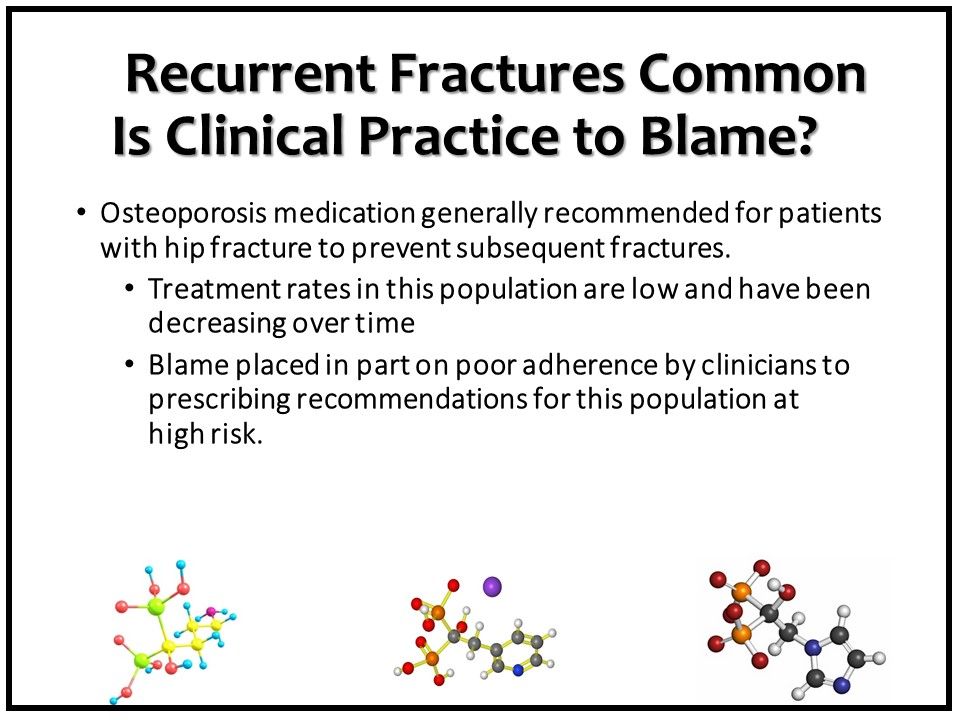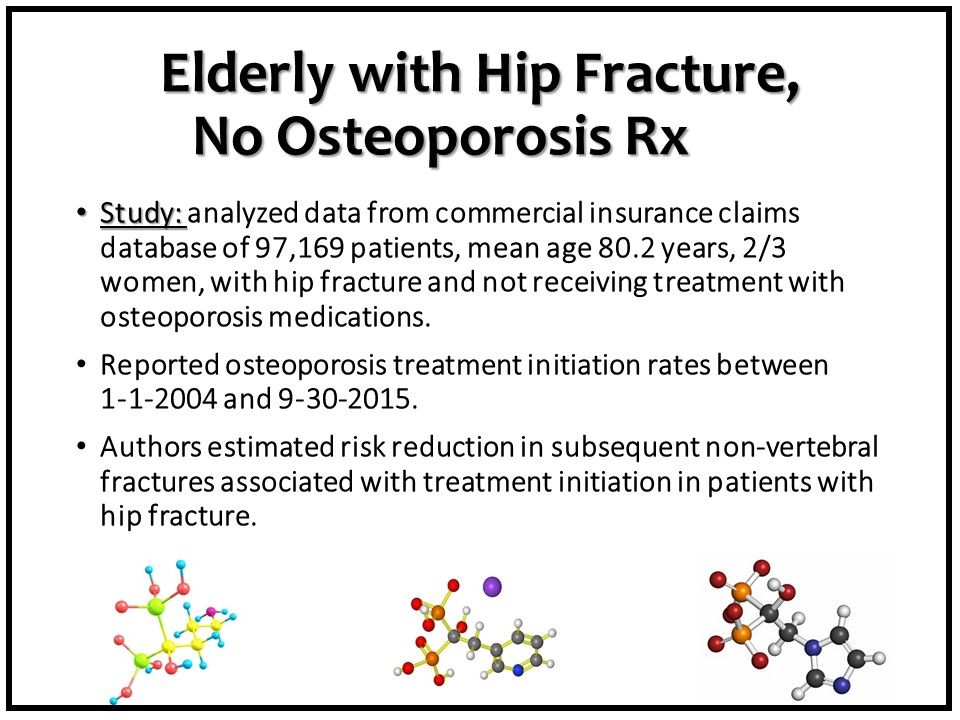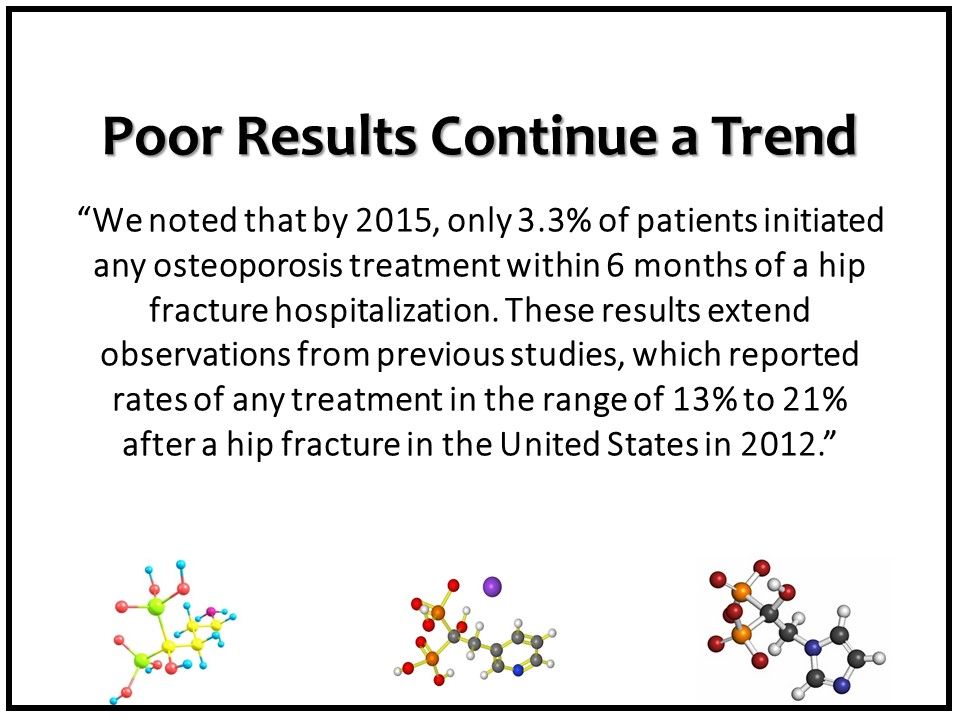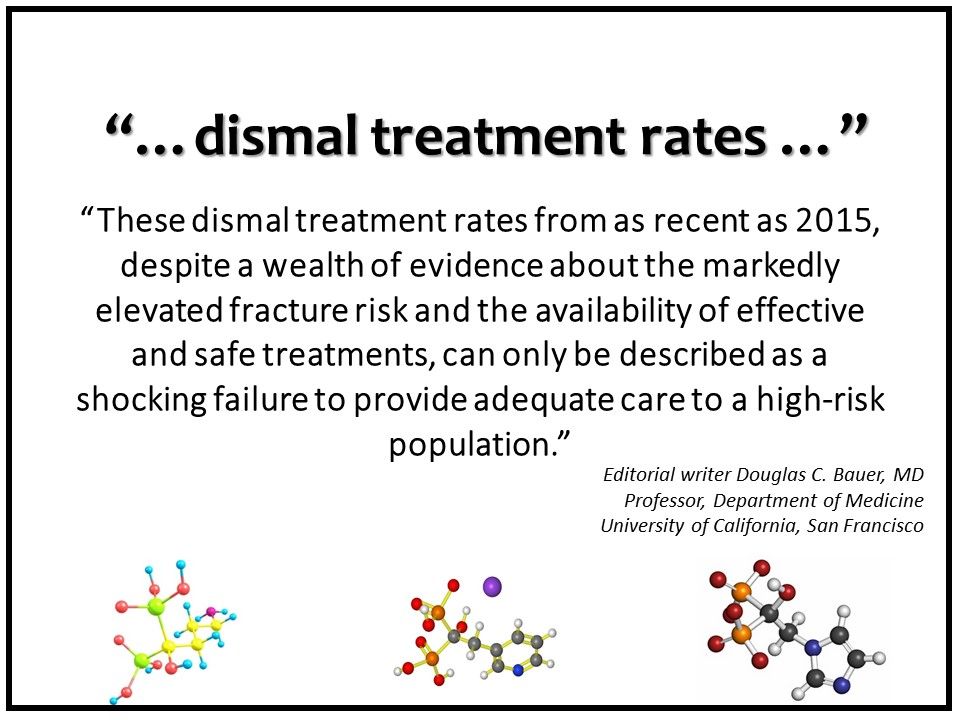© 2025 MJH Life Sciences™ , Patient Care Online – Primary Care News and Clinical Resources. All rights reserved.
Osteoporosis Rx Poor Within 6 Months of Hip Fracture
A new study found that post-hip fracture, less than 5% of elderly patients were started on osteoporosis medication despite high risk for recurrent fracture.

Recurrent fractures after a first osteoporosis-related fracture is a major public health burden--it is esimated that 15% to 25% of patients experience a second fracture within 10 years. A recent US study among Medicare enrollees found that after approximately 10 years of a decline in rates, hip fractures have remained stable at ~7.4 cases per 1000 enrollees after 2012 -- a plateau that may have been responsible for more than 11 000 additional hip fractures between 2012 and 2015.
Researchers led by Rishi J. Desai, MS, PhD, of Brigham and Women’s Hospital/Harvard Medical School and colleagues looked at initiation rates for osteoporosis medciation within 6 months among elderly patients who had been hospitalized for an initial hip fracture. Results were published on July 20, 2018 in JAMA Network Open.

Only a small percentage of Americans receive effective osteoporosis drug treatment in the first 6 months following hip fracture, despite the fact that drug treatment following hip fracture results in meaningful reductions in subsequent fractures.

This cohort study analyzed data from a commercial insurance claims database of 97,169 patients, mean age 80.2 years, who had a hip fracture and were not receiving treatment with osteoporosis medications. The researchers reported osteoporosis treatment initiation rates between January 1, 2004, and September 30, 2015, and estimated the risk reduction in subsequent non-vertebral fractures associated with treatment initiation in patients with hip fracture. Two-thirds of the patients were women.

The results show a continuous decline over the study years in osteoporosis medication initiation rates from 9.8% in 2004 to 3.3% in 2015. In effectiveness analyses, a hospital preference instrumental variable had a stronger association with treatment than three other 3 instrumental variables, including specialist access, calendar year, and geographic variation.
There was also a clinically meaningful reduction in subsequent non-vertebral fracture rate of ~4.2 events per 100 person-years among patients who initiated osteoporosis treatment vs nonusers.

The authors continue: “Our findings of low use of these treatments, despite clear evidence of effectiveness, highlight a need for interventions to increase patient and physician awareness and to promote innovative collaborative care models that can increase adherence to evidence-based prescribing practices.”

In an editorial accompanying the study Dr Doulgas C Bauer continued his call for correction. "Undertreatment of patients following hip fracture is an important age-related health disparity that must be addressed by both health systems and individual clinicians. Once identified, patients who have had a previous fracture can be counseled about fall prevention strategies and effective drug therapy to avoid additional fractures.”
 Source: Desai RJ, Hahesri M, Abdia Y, et al. Association of osteoporosis medication use after hip fracture wth prevention of subsequent nonverteral fractures as an instrumental variable analysis. JAMA Network Open. 2018;1(3):e180826. doi:10.1001/jamanetworkopen.2018.0826Â
